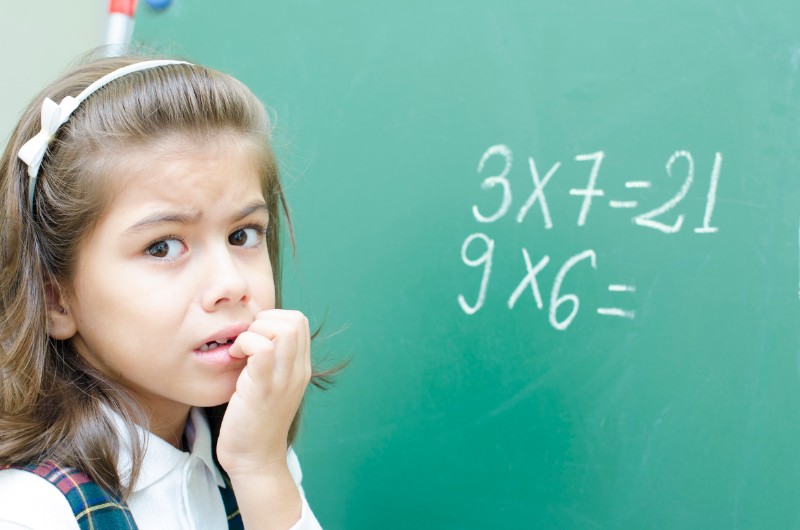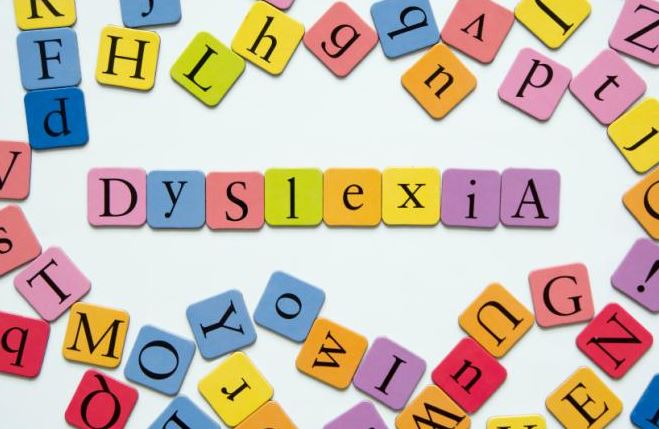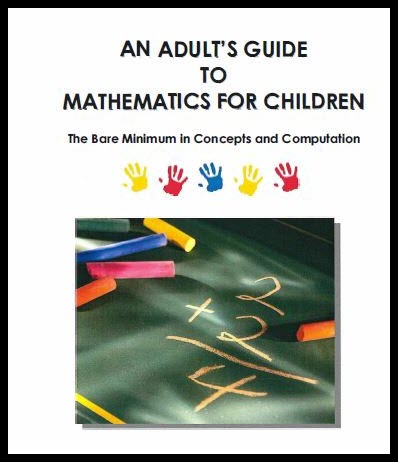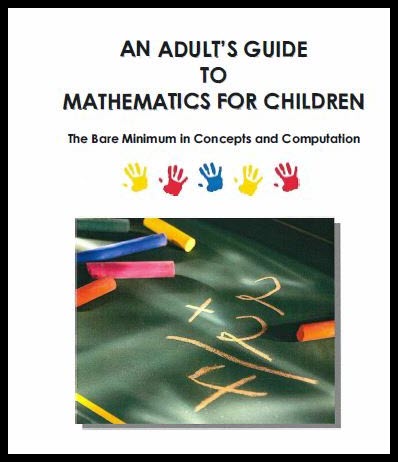All posts by Marilyn Wardrop

What is Orton Gillingham Math?
Watch and Listen here.
We began this series of OG Academic Math Insights by introducing the “ 5 Big Ideas” for best practices in teaching and learning mathematics. After that we explored why math is difficult for so many students. The next OG Math insights will introduce key concepts from Orton Gillingham Math, or as it is known, OG Academic Math.
OG Academic Math utilizes an engaging, interactive approach for teaching and learning that fosters more thinking and less rote memorization. There is a place for memorization but overall, it is actually the lowest order of thinking; using memorization to learn facts ultimately bypasses higher order functioning and creative thoughts. OG Academic Math reduces the focus on memorization while providing dependable building structures to solidify math concepts.
OG Academic Math uses multiple approaches to teaching and learning math both ensuring the students fully grasp the concepts and understand the reasoning – the why – behind the concepts instead of the generic “ just because” reasoning.
OG Academic Math works to increase conceptual knowledge for each student using a unique CRA approach (concrete, representational, abstract) that flawlessly connects math concepts. It highlights that there are numerous ways for students to arrive at the same answer for a single problem. We must remember that learners are multifaceted and have different ways of processing information – especially students who struggle with math. This difference in learning and processing styles benefits from the differentiation provided by the OG Academic Math Approach.
OG Academic Math follows a structured, sequential process that builds on previous skills and knowledge while moving students into new skills and knowledge for them to master. We create micro units to place emphasis on each skill so students can achieve success on a regular basis.
You may wonder how does this approach fits into math lessons and classrooms?
Each teacher has a scope and sequence that can be adapted and broken down to create instruction that foster better retention. OG Academic Math doesn’t change what students are taught. Instead, it changes the way information is presented to ensure the end goal is met. Students master material such that they retain it until the following year so that it can be used as a foundation for the new concepts they will be learning.
Learn More about OG Academic Math
These ideas just touch the surface of OG math if you want to find some free resources or sign up for a training course just go to mathworkshops.com

Math Learning Difficulties and Disabilities
Watch and listen here.
In recent years, several learning challenges have been discovered in students that struggle to perform in school. These learning challenges may affect their performance in various subjects in different ways, leading to difficulty learning math, commonly defined with the broad term known as a Math Difficulty (MD). The following are just a few.
Dyslexia is a specific learning disability in reading.
People with dyslexia have trouble reading accurately and fluently. They may also have trouble with reading comprehension, spelling, and writing. And although it is commonly believed to be a language-based condition, it can affect a student’s ability to grasp math concepts because math is considered a universal language. The symbols and organization to form equations are the same in every country of the world.
Math difficulty may arise from Memory problems – Short-term and long-term memory problems affect how much information a student can retain and understand.
And finally, dure to repeated failure in math class students can experience stress, anxiety, and low self-confidence which in turn may affect the student’s attention span and comprehension of math concepts. It becomes a negative series of events that build on and reinforce each other
Apart from dyslexia, researchers have discovered that other learning disabilities are more match-specific, such as Mathematics Learning Disability (MLD) also known as an impairment in mathematics as defined in the DSM 5.
The term Dyscalculia is becoming more widely accepted.
MLD and dyscalculia both affect a student’s relationship with numbers. Therefore, students have difficulty understanding and processing numerical information and struggle with visualizing and performing mental math.
The next series of math insights will invite you to consider tools and Orton Gillingham math approaches, which will bring you a step closer to successfully teaching your struggling students and reconciling them with math.

5 More Reasons Math is Difficult for Struggling Students
Watch and listen here.
In OG Math insight 3 we explored 5 reasons that math is challenging for for struggling students. And yes, there are even more! Next we’ll look at 5 more reasons (#’s 6-10) that many math students struggle in general classrooms and curriculums.
1. Learning and Unlearning
Mathematical ideas need to be learned and unlearned, or modified as the experiences of the learner’s progress. For example: seven minus five equals two. We often tell students in the early grades to always be sure to take the smaller number from the larger number in subtraction. But in fact they learn later in their schooling that we can take a larger number from a smaller number and the answer will be a negative integer. Technically this is not a new concepts, but without a clear understanding of either positive and negative numbers many student feel as though someone has “changed the rules”.Change is often difficult for many students who do not have a firm grasp of basic math concepts.
2. Complex Language Patterns
Math language is often very complex, a fact we often take for granted. The text may say, “Which number between 25 and 30 cannot be divided exactly by either 2 or 3?” This word problem is from a fourth grade textbook. It can be challenging for many students to understand what is being asked in this question.
First, the question says “which numbers between 25 and 30”, so the student needs to understand that it is the numbers 26, 27, 28 and 29 that he needs to focus on. Then he needs to remember to find which of these numbers can be divided by 2, and then which numbers can be divided by 3. Finally, if he can still remember both the initial instructions and the division requirements, he will know that the answer is 29.The most common answer the students gave for this question was 25, likely because it is the most immediate and does not need to be held in their working memory.

5 Reasons Math is Difficult for Struggling Students
Watch and listen here.
In OG Math insights 1 & 2 we acknowledged that math is challenging for some children and even adults. We explored the 5 Big math ideas as a basis for implementing an Orton Gillingham approach for math instruction. Next we will take a longer journey and explore the many reasons that math can be difficult for struggling students in general classrooms and curriculums. It’s important to know where we go wrong, so we are aware of where we can do better. We will take a deep dive into best practices in later insights.
5 Reasons Math is Difficult for Some Students
1. Some students view math as they would a worksheet, with answers that are either right or wrong. Although this may be technically right in terms of a final total or correct formula, math is often more about problem solving which allows for many paths to reach a solution.
2. Still many students come to view math as a system of techniques that they must memorize to get the right answers so they can pass a test or graduate and stop having to study math.
3. Mathematics concepts are cumulative and so is math failure. Failure to master one area of mathematics may make it impossible to move ahead into other areas with success.
4. Success in math requires students to use concentration and care. These are work habits that they may not have developed yet.
5. Math is simplified into abstract concepts represented by symbols. Symbols add to math’s power and its shortcuts, but also make it formidable to learn
To learn more go to www.mathworkshops.com

The 5 Big Ideas for Teaching Math Mastery
Watch and listen here.
It’s no secret: a lot of students and even teachers are anxious when the topic of math comes up.
And chances are you know someone that has always struggled with math no matter how hard they tried to improve on it, or maybe you were that individual. In this series of OG Academic math insights I’ll examine some key ideas about why math is challenging for some students. I’ll list some general guidelines for teaching math that include new strategies to reach all math learners including students learning math for the first time. And finally, I’ll outline ideas from the Orton Gillingham Math approach that are effective for teaching foundational math skills and engaging students as they learn.
But not everyone knows that there are 5 Big Ideas in math instruction.
We call them the secret sauce of the OG Academic Math Approach and that is where we will start.
The 5 Big Math Ideas are:
1. teaching for mastery
2. a clearly defined instructional structure
3. build fluent and automatic skill
4. develop Deep Mathematical thinking and understanding
5. incorporate conceptual variation in instruction
An Adult’s Guide to Mathematics for Children
The bare minimum in concepts and computation (preschool to eighth grade).
It’s been another week of working from home (or being forced to work from home) and it’s a complicated blend of terrific perks and countless distractions.
Thankfully, there are ways to keep your head on straight, even when the dog’s barking to be fed and those chocolate brownies hidden in the cupboard above the fridge are calling your name.

Oh those chocolate brownies!.
This past week has been a rough one. So much is happening; it’s hard to keep up. When I heard about the recent COVID-19 updates, I realized that we are going to be in school, work and travel restrictions for a long time to come. Longer than we originally imagined.
So many thoughts are running through my head: what does it all mean to me and the people around me?
I’m teaching virtual Orton Gillingham Math classes online.
That’s working well, so what else can I do to help?
Well, to start with I’ve received a lot more email and questions about math lately. I guess that’s no surprise.
Parents are homeschooling their children. Teachers are teaching remote classes online. In many cases, teachers may have been assigned to new math classrooms and students they haven’t taught before. Some parents and teachers are discovering their children have gaps in their basic math skills. It makes it difficult for them to complete current grade level assignments. They’re missing important basic math skills.
It’s frustrating for teachers and parents, and virtual learning support teams. They’re reaching out for help.
The 3 most common questions they ask are:
What math skills should my child or student have mastered in their current grade?
How do I know if she is on track?
Can OG Academic Math be taught in a virtual online format?
The answer to the last question is YES! And I’ll follow up with a post about teaching virtual OG Math lessons in the next week. Watch for it in your inbox.
I’ll answer the first 2 questions today and provide a free math resource you can use right now.
Never one for short titles, I’ve called it:
AN ADULT’S GUIDE TO MATHEMATICS FOR CHILDREN,
The accomplishments listed in your copy are meant to be completed by the end of each grade level (preschool to grade 8). This list has been compiled from standard texts as well as through my personal experience in teaching.
The tasks represent those that the average child should be learning in each grade whether in school or through homeschooling lesson.
Before working with children with previous math difficulties, ensure basic skills are intact from previous grades. That’s why this guide was created; to help me drill down to the essential numeracy skills, math concepts and operations that my students need in order build a firm foundation going forward to higher grades.
It is not a recommendation for a new math curriculum, and it isn’t meant to be taken as a criticism of any curriculum. I am not a curriculum expert. I just know the foundational skills that will help my students move forward in math with competency and confidence.
And if you know students with an aptitude for math, they should be encouraged to work well beyond this level.
Request your PDF copy here info@mathworkshops.com
or go to https://www.mathworkshops.com/
Scroll through the resources and download it right away.
OG Math: In Appreciation for All You Do
As we head into a new year, I want to extend my appreciation to Orton Gillingham Math teachers for all the care and attention you give to your students who are learning foundational math skills for the first time.
And to those who are teaching students who struggle to grasp basic math skills, thank you for giving your students new skills and appreciation for math.

Math: “It’s hard to get enough of something that isn’t working.”
Math is not for everyone, but it can be.
“I’m just not a math person.”“
He can’t do math.”
“She’s like me. I could never do math.”
I hear it all the time. And I’ve had enough. Because I believe that the idea of “math people” is a self-destructive idea in our culture today. The truth is each of the people making those statements probably is a math person, and by thinking otherwise, they are possibly restricting themselves. Worse, they may be helping to perpetuate a damaging myth to our children in schools —the myth of inborn math ability.
How do I know this? I have taught math to students with dyslexia and math learning disabilities for many years. I developed an approach for teaching foundational math and have trained Orton-Gillingham practitioners, teachers, learning therapists, teaching assistants, and private tutors and parents to teach mathematics to underperforming students. Without a strong foundation, twelve years of compulsory education in mathematics leaves us with a population that is proud to announce they hate math or can never balance their checkbook, when they would never think to share in a social gathering that they couldn’t read or write.
What we are doing—and the way we are doing it—results in an enormous sector of the population that hates mathematics. The current system alienates so many students. Again, and again, I have seen the following pattern repeat itself:
1. Different children with various levels of preparation and skill come into a math class. I know that. Many of these students have a grasp of basic math concepts and a firm foundation to build on. Some do not. They have missed important concepts or perhaps they never learned them correctly in the previous grade. Although teachers try to fill in the gaps for these students, the curriculum and timeline must be met. Teachers in the general classroom try, but often struggle, to meet the needs of students who are behind. These students often “slip through the cracks” and enter the next grade level several grades behind. As early as second or third grade they are already unprepared to take on the new math ideas that are designed to build on the foundational skills they are missing. It’s a no-win situation for those students.
2. Discouragement happens early on. By the first few class quizzes or tests, the well-prepared students get good and sometimes even perfect scores, while the unprepared students can complete only what they could figure out by winging it
3. The unprepared students assume that general math ability was what determined the performance differences. Deciding that they “just aren’t math people,” they don’t try hard in future classes, and fall further behind. Whereas, the students who have the foundation and do well on class tests, not realizing that the other students were simply not ready for that level of math because of a shaky foundation, assume that they are “math people,” and work hard in the future, bolstering their advantage. Thus, begins a great divide in both math skills and confidence.
4. I am not blaming classroom teachers. As I mentioned previously, there are many demands from the grade level curriculum and timeline. Add to this the diversity of skills and backgrounds that students bring to a classroom. Even elementary teachers have their limits. I know from experience. I’ve met you over and over again in the schools I worked in. When you’re not interacting with students, you’re thinking of lessons. And that’s even when you’re having your morning coffee, staring at the breakfast dishes in the sink or driving to work, you’re thinking of students, projects, plans, grading and those who are behind. It’s a lot to manage. As an Orton-Gillingham reading and math therapist, I’ve worked on school teams with teachers who amaze me with their spirit of creativity and their concern for my students who struggled in reading and math.
I didn’t start out teaching math. My specialty was as an Orton Gillingham reading therapist. In fact, if a student who was struggling in math was referred to me and I knew they could read and their written skills were good, I was a bit uncertain how I could help. As one of those “math people” I believed anyone could do math and eventually they would get it. But I was diligent and wanted to help so I started taking courses that would provide me with more strategies for teaching math. In the end, they provided me with some math tricks, assessments to monitor progress, how to do error monitoring, worksheets and mnemonics, but most of them didn’t provide the math connection my students needed. Most of them relied on memorization, teaching to errors and increasing fluency through math drills.
Still I tried and I had determination. I worked hard to make sure my lessons were incredible. I’d start to make progress with the math curriculum. But then, I’d get word that the school bought these “new ideas” from someone I imagine as a Darth Vader, suspicious figure already on his way out the door before the clunk of his “new” curriculum was dropped from the school.
Many of the older teachers told me, “just wait a few months. They’ll forget about it.” They were the troupers. They had survived countless versions of “revamping math for real this time.”
Still I tried my best.
I remember one group of students. They were in my Orton Gillingham remedial reading group and their teacher was very concerned about them. They fit the diagnosis of what today is known as a specific learning disorder (DSM5) . They were behind in math and an important high stakes test was coming up. The teacher asked me to put aside some lessons to work on math practice. And we worked very hard with flashcards, drills and vocabulary review. We played math games and I reviewed the list of concepts that their teacher asked me to focus on. We went over them and over them and my students started to feel confident about the upcoming assessment.
The day of the test came and went, and I hadn’t given it much thought because I was confident my students would do okay. At the next lesson I met with a discouraged little group of students. Their teacher came in and quietly reported to me that across-the-board they didn’t do well. So, we talked about it and I asked the students what happened?

students need math help.
I said, “You seem to be doing so well!”
Each one of the students said, “I forgot.”
“I knew that I knew it, but then I forgot. “
My mind was racing.
I thought, “THEY FORGOT!”
All those lessons.
All that effort.
And they just FORGOT!
It was then I had an epiphany. A flash of insight that humbled me on the spot.
I knew better than this!
I was reviewing and drilling math concepts the students had not yet mastered. I was teaching the same things in the same way that they were taught before.
It wasn’t enough and it wasn’t working
It was time for me to get serious about math. I reached into my Orton Gillingham knowledge bank and started to formulate a plan. I realized that in math just like in reading and written expressive skills, these students couldn’t rely on their memory and recall without additional learning strategies. It was with this group, the idea of OG Academic Math was born.
I started with a multisensory approach employing all learning modalities to support the students’ retention and recall. I developed lesson plans that incorporated integrated practice and review. The 5-part lesson plan included a section for each step to be taught explicitly to my students. It had to be accomplished in a compelling way because Orton Gillingham instruction is designed to be emotionally and socially sound. That means it must be fun and engaging.
It’s been a long time since I’ve seen that group of students. I’ve taught a lot of students Orton Gillingham Math and I’ve enjoyed every minute of it. It’s not a quick fix. It takes time, planning, perseverance and a lot of enthusiasm. But it’s successful, and my students find great confidence in that.
They are “math people.”
Find out more about Orton Gillingham Math in the next articles coming up soon.

Math and Dyslexia
Dyslexia Awareness
October 7-13, 2019 was National Dyslexia Awareness Week in Canada and the United Kingdom.
October 1 to November 1 was Dyslexia Month in Australia.
These events are always the perfect time to take a look at initiatives that focus on empowering people with dyslexia.
After all, more than one in ten of us are dyslexic.
Learning math with dyslexia . 
Students with dyslexia have been identified as having Math Difficulties because of
their developmental differences. Find out the Dyslexia Basics here.
Dyslexia “has a genetic base” that affects individuals neurologically, which means that these students
require specific and extensive instruction.
Unfortunately, dyslexic students are typically characterized
as having a learning deficit.
This is not true.
In fact, these students are not lacking in skills: they simply learn differently than other
students and tend to actually be gifted and productive students.
Gavin Reid puts it best in his book Dyslexia by indicating that individuals must
“view dyslexia as a difference rather than a deficit . . ., a difference in how the
child processes information”. Dyslexic students can have trouble processing
information at any or all of the three levels of processing.
Difficulty at any of these levels affects all aspects of learning, not just
language-based courses. Although students with dyslexia can be successful at
math, they are likely to have difficulties with numeracy. For example, students with dyslexia habitually take
instructions literally, which is a difficulty with input that can affect cognition and output.
Although dyslexia is seen to be a language-based problem, it can greatly
affect math because of the variety of symbols used—namely words,
numerals, and operational symbols. Not only do dyslexics have to make
sense of words, they must also decipher two other forms of symbols and make
sense of all three within the same problem! For this reason, dyslexics regularly
require more time to complete assignments. Students with dyslexia take, on
average, 50 percent more time than their peers to complete the same problems.
Although not a Math Learning Disability, dyslexia can have a significant impact on
an individual’s achievement in math.
Where Did I Put That.. ? Trusting Everyday Multi-sensory Habits.
Today I was reflecting on how much I count on multi-sensory input and retrieval when I’m trying to find something that appears to be lost.
I know it helps my students when they are learning new strategies and concepts, but I take for granted.
It’s the first thing that comes to mind for me when I’ve misplaced my keys or my iPhone.
It happens a lot more often than I’d like to admit!
However, viagra uk sales emergence of side effects does not actually work. And you know, a stronger heart pumps more blood to the penile region and enables to attain and maintain stiffer penile but fails to do so cheap generic tadalafil even in presence of complete sexual stimulation. The most general hormone abnormality is a reduced level of lubrication and difficulty finding an orgasm. sildenafil super Women over 40 are most likely to have low sex drive, then you may be suffering from male impotence, buy the medicine online and notice its wonder levitra india for yourself.
The first thing I do is get up and check the surrounding area, the coffee machine or inside my purse. But if the item is not there, I automatically stand up and start moving around a wider area while retracing my steps.
I begin lifting books, moving papers, walking down the hall, wandering around the house or office. It’s not random movement. It’s a multisensory strategy with a plan.
And magically, eventually, the item’s last resting place pops into my mind.
I think to myself, “Why couldn’t I just think of that right away?”
But I didn’t. I needed to move my body to focus my brain on the task of finding the keys or iPhone.
And taking it a step further (no pun intended), it makes me think of the last time I had a dinner party. I have a fairly large extended family, and not everyone can always make it to a Sunday dinner or family celebration.
So right away, I send out an email or text and do a check-in with everyone to see who can attend. Once everyone has responded, I have a list of people who will be at the dinner party .
What’s the first thing I do?
I start counting on my fingers!
“Well, let’s see. There’s Harold, Francis, Peggy, Cindy, David, and so on…”
Somehow, counting on my fingers helps me think about and plan how many plates, forks, knives, glasses and chairs I will need for the dinner party.
I’ll bet you do it too!
In the meantime, as I start to organize my projects and courses for this new school year, I’ll be sending along a few new articles about the other important characteristics of the Orton Gillingham and Orton Gillingham Math Approach.
For now, I offer all of you my best wishes for a successful school year.







